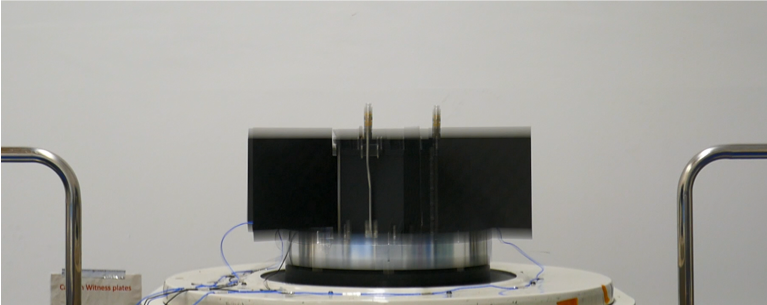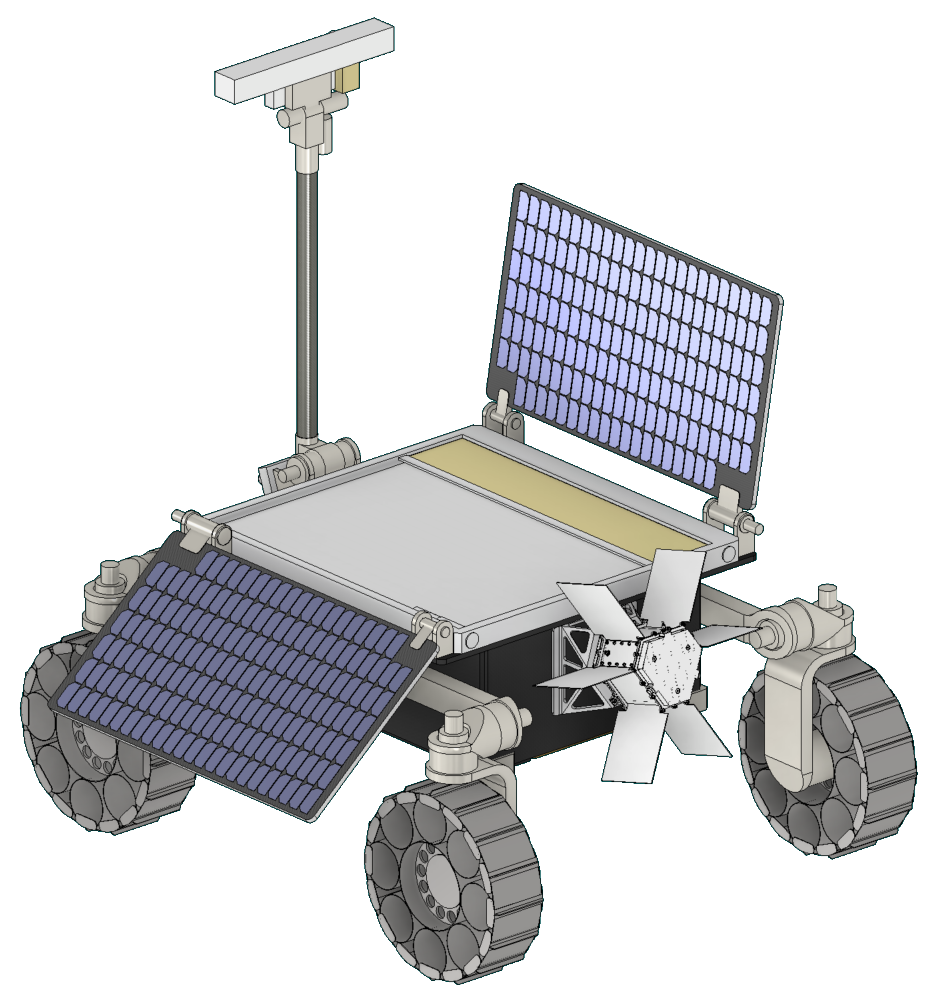Space power: Radioisotope Thermoelectric Generator aces vibration test

A cutting-edge ‘space battery’ has been subjected to extreme vibrations to test its resilience for the harsh environment of a rocket launch – and passed with flying colours.
A team at the University of Leicester and its £100 million science park Space Park Leicester is leading the development of radioisotope power technologies in Europe and have now successfully tested their cutting-edge Radioisotope Thermoelectric Generator (RTG) in an extreme vibration test campaign.
The Space Nuclear Power group at the University of Leicester has been developing radioisotope power systems for over a decade. These power systems use the heat generated from the decay of radioisotopes, and can be used to provide heat to spacecraft, or converted to electricity to power key subsystems.

Lunar Polar Explorer Rover concept with hybrid power system architecture (solar arrays + RTG). The RTG at he back of the rover is coupled to the thermal bus for extended exploration of permanently shadowed regions and night-time survival on the lunar surface.
Credit: Airbus/ESA.
Their Radioisotope Thermoelectric Generator or RTG (also sometimes referred to as a ‘space battery’) uses americium fuel, which can provide stable power outputs to spacecraft for many decades. RTGs that use americium perform better in cold environments which makes them suitable for missions targeting icy moons or shadowed regions of planetary surfaces.
The RTG that has been under the development leadership of the University of Leicester since 2010, as part of a European Space Agency development programme, has been transformed in its generation 5 design and has now been successfully tested to extreme vibration levels exceeding 24 g (Sine testing) and 12 Grms (Random testing), where the RTG was shaken vertically up-and-down and laterally side-to-side for just over two minutes to mimic the forces and accelerations experienced during launch into space.
Dr Ramy Mesalam, the technical lead on the project, said: “This was a critical milestone for the team and the system. The performance exceeded all expectations and this will enable us to accelerate the migration to a mission application.”
Professor Richard Ambrosi, Executive Director of Space Park Leicester and project lead said: “This is a testament to the depth of technical capability of the radioisotope power systems team. The University of Leicester also would like to thank both the European Space Agency and UK Space Agency for their continued support and also credit the excellent ESA ENDURE and UK Space Agency’s exploration teams who have been supporting this programme.”
- Find out more about the University of Leicester


